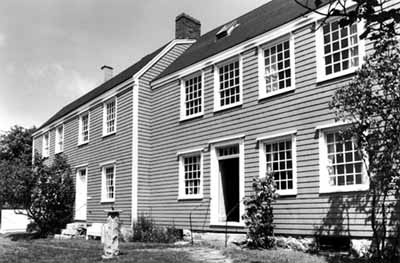Loyalists at Shelburne National Historic Event
Shelburne, Nova Scotia

Early loyalist House at Shelburne
© Expired
Address :
Highway 3 - at the foot of King Street, Shelburne, Nova Scotia
Recognition Statute:
Historic Sites and Monuments Act (R.S.C., 1985, c. H-4)
Designation Date:
1923-05-25
Other Name(s):
-
Loyalists at Shelburne
(Designation Name)
Importance:
Town founded by Loyalist refugees in 1783
Plaque(s)
Original Plaque: Highway 3, at the foot of the King Street, Shelburne, Nova Scotia
Settled in the years following the close of the American Revolution by men and women determined to remain under the flag and rule of Great Britain rather than become citizens of the United States. The Harbour, once known as Port Razoir, and then as Port Roseway, was the site chosen by the Port Roseway Associates of New York. The first Loyalist settlers arrived 4th May, 1783. Laid out the named Shelburne, 22nd July, by John Parr, Governor of Nova Scotia.
Existing plaque: Highway 3 - at the foot of King Street, Shelburne, Nova Scotia
During the American Revolution many pro-British refugees gathered at New York. The wealthier class went to England, but most of the less affluent sought refuge in Nova Scotia. Four hundred such families associated to found a town here at Port Roseway, which Governor John Parr renamed Shelburne. Within a year from the arrival of the first refugees in May 1783, the town mushroomed to a population of 10,000. The region, however, could not support so large a settlement, and most of the refugees subsequently moved elsewhere in the province or to New Brunswick, while some returned to the United States.